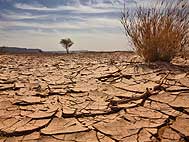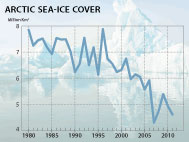| SEARCH |
-

Nov 17, 2015
Reflections on a three-decade legacy
The International Geosphere-Biosphere Programme (IGBP) will come to a close at t...
-
Nov 17, 2015
Use of and access to content on this website
Text and images produced by IGBP in house are free to use with appropriate credi...
-
Nov 12, 2015
Bella Gaia performance and panel discussion to mark IGBP's closure
A musical performance by Bella Gaia will celebrate the achievements and legacy o...
-

Towards Future Earth:
evolution or revolution?
During its three decades of existence, the International Geosphere-Biosphere Pro...
-
A personal note on IGBP and the social sciences
Humans are an integral component of the Earth system as conceptualised by IGBP. João Morais recalls key milestones in IGBP’s engagement with the social sciences and offers some words of advice for Future Earth.
-
IGBP and Earth observation:
a co-evolution
The iconic images of Earth beamed back by the earliest spacecraft helped to galvanise interest in our planet’s environment. The subsequent evolution and development of satellites for Earth observation has been intricately linked with that of IGBP and other global-change research programmes, write Jack Kaye and Cat Downy .
-
Deltas at risk
Around 500 million people worldwide live on deltas, but many of the world's deltas are sinking due ...
-
Climate change: the state of the science
A new data visualization released on the first day of the plenary negotiations at the UNFCCC’s clima...
-
Climate Change:
the State of the Science
Videos now online from the Stockholm public forum to mark the launch of the IPCC's climate report, 2...
Spatiotemporal variability and long-term trends of ocean acidification in the California Current System
Biogeosciences (2013)
Hauri C, Gruber N, Vogt M, Doney S C, Feely R A, Lachkar Z, Leinweber A, McDonnell A M P, Munnich M and Plattner G-K
DOI: 10.5194/bg-10-193-2013
Vol 10, pp 193-216

Abstract
Due to seasonal upwelling, the upper ocean waters of the California Current System (CCS) have a naturally low pH and aragonite saturation state (Ωarag), making this region particularly prone to the effects of ocean acidification. Here, we use the Regional Oceanic Modeling System (ROMS) to conduct preindustrial and transient (1995–2050) simulations of ocean biogeochemistry in the CCS. The transient simulations were forced with increasing atmospheric pCO2 and increasing oceanic dissolved inorganic carbon concentrations at the lateral boundaries, as projected by the NCAR CSM 1.4 model for the IPCC SRES A2 scenario. Our results show a large seasonal variability in pH (range of ~ 0.14) and Ωarag (~ 0.2) for the nearshore areas (50 km from shore). This variability is created by the interplay of physical and biogeochemical processes. Despite this large variability, we find that present-day pH and Ωarag have already moved outside of their simulated preindustrial variability envelopes (defined by ±1 temporal standard deviation) due to the rapidly increasing concentrations of atmospheric CO2. The nearshore surface pH of the northern and central CCS are simulated to move outside of their present-day variability envelopes by the mid-2040s and late 2030s, respectively. This transition may occur even earlier for nearshore surface Ωarag, which is projected to depart from its present-day variability envelope by the early- to mid-2030s. The aragonite saturation horizon of the central CCS is projected to shoal into the upper 75 m within the next 25 yr, causing near-permanent undersaturation in subsurface waters. Due to the model's overestimation of Ωarag, this transition may occur even earlier than simulated by the model. Overall, our study shows that the CCS joins the Arctic and Southern oceans as one of only a few known ocean regions presently approaching the dual threshold of widespread and near-permanent undersaturation with respect to aragonite and a departure from its variability envelope. In these regions, organisms may be forced to rapidly adjust to conditions that are both inherently chemically challenging and also substantially different from past conditions.
IGBP closed at the end of 2015. This website is no longer updated.
-

Global Change Magazine No. 84
This final issue of the magazine takes stock of IGBP’s scientific and institutional accomplishments as well as its contributions to policy and capacity building. It features interviews of several past...
-

Global Change Magazine No. 83
This issue features a special section on carbon. You can read about peak greenhouse-gas emissions in China, the mitigation of black carbon emissions and the effect of the 2010-2011 La Niña event on gl...
-
INTERGOVERNMENTAL PANEL ON CLIMATE CHANGE:
How green is my future?
UN panel foresees big growth in renewable energy, but policies will dictate just how big.
-
UK:
'The Anthropocene: a new epoch of geological time?'
Royal Society, Philosphical Transactions A




















